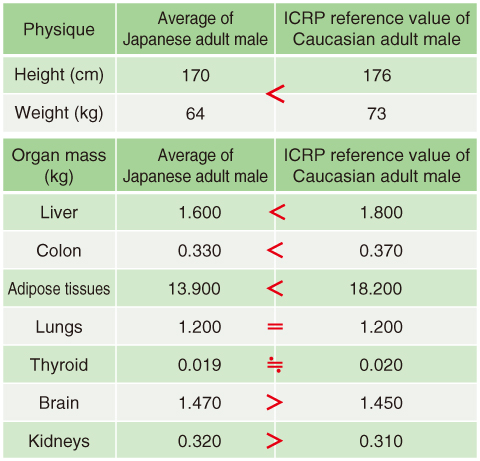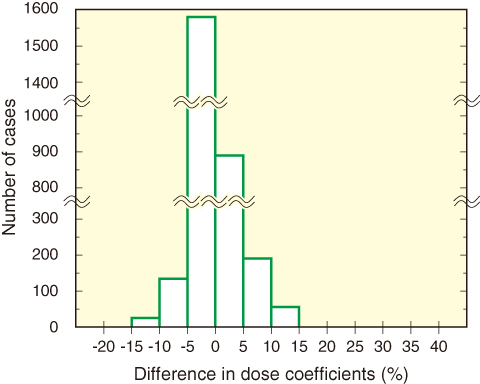Table 4-1 Averages of Japanese and reference values of Caucasians for physiques and organ masses in adult male


Fig.4-23 Histogram showing difference in dose coefficients between JM-103 and ICRP models
Assessing the internal dose due to the intake of radioisotopes (RIs) requires the knowledge of the ratio of energy deposited in the target organ to energy emitted by radiation from the source regions. These ratios are called the specific absorbed fractions (SAFs) and are calculated with human models that reproduce the shapes of organs, tissues, and body. For dose assessments, the International Commission on Radiological Protection (ICRP) has defined reference human models (ICRP models) that have the heights, weights, and organ masses appropriate for Caucasians. In the future, SAF data and effective doses per unit intake of RI (i.e., dose coefficients) will be published based on the calculations using the ICRP models.
The typical Japanese body size, however, is generally smaller than that of a Caucasian, and organ masses for Japanese also differ from those of Caucasians, as shown in Table 4-1. We analyzed discrepancies in SAFs and dose coefficients between Japanese and Caucasian due to differences in body size and organ mass (these are the physical characteristics), because dose coefficients given by the ICRP are used to establish radiation-protection standards in Japan.
We developed a human model named JM-103, whose physical characteristics are those of an average Japanese adult male. In this study, calculations of SAFs using JM-103 were performed for photons and electrons at 15 energies from 10 keV to 5 MeV, and for various combinations of 41 source regions and 33 target organs. Comparing the results of this calculation with SAFs based on the ICRP model reveals differences between the SAFs derived from organ masses and the weights of the two models. Next, we calculated the dose coefficients (De) using the SAFs of JM-103 and the ICRP model for 2894 cases, considering intake pathways and the chemical forms of 923 RIs.
Fig.4-23 shows the distribution of the difference in De between the JM-103 and ICRP models. The maximum De was about 40%, which was due to the differences in the SAFs between the models. However, the results show that, in 97% of all cases calculated, the De ranged from −10% to 10%. Thus, only in a limited number of cases the De were significantly affected by differences between the representative physical characteristics of Japanese and Caucasians. Thus, we conclude that the dose coefficients used by ICRP are applicable to the Japanese population for radiation protection.